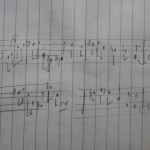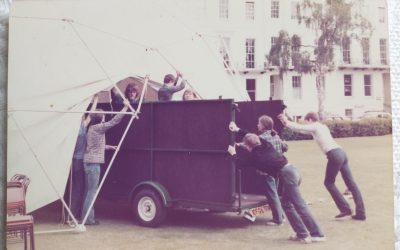 Bob and I were arguing over breakfast about the theme tune at the end of ‘Frasier’. We’re working our way through a box set and enjoying the Frasier ambience all over again. But we had rather different memories of what notes he sings to the words ‘tossed salad and scrambled eggs’. The lyrics are enigmatic ( ‘Hey, baby, I hear the blues a-calling, tossed salad and scrambled eggs’). Our concern, however, was the tune.
Bob and I were arguing over breakfast about the theme tune at the end of ‘Frasier’. We’re working our way through a box set and enjoying the Frasier ambience all over again. But we had rather different memories of what notes he sings to the words ‘tossed salad and scrambled eggs’. The lyrics are enigmatic ( ‘Hey, baby, I hear the blues a-calling, tossed salad and scrambled eggs’). Our concern, however, was the tune.
I sang my version, Bob sang his, and we each told the other they were wrong. Then we got the phone message notebook, drew some lines of music score and wrote down our competing versions. We still couldn’t agree, so we put in a DVD and found a point where the tune appears.
Immediately the plot thickened. Kelsey Grammer‘s intonation is flexible, and sometimes it’s a cross between singing and speech. The between-the-cracks pitches seem completely natural in the context, but still allow two old pedants to stand there arguing about whether a certain note is a sharp E or a flat F, whether the next note is a flat E flat or a sharp D, and so on. Our notebook was strewn with crossed-out sharps and flats, not to mention rhythms. You can buy music books that claim ‘it’s easy to play TV Theme Tunes’, but goodness knows what they make of this one.




Doesn’t it all depend on the purpose of the notation? Is it to enable someone to create their own performance, to recreate precisely Kelsey Grammer’s, to comment critically on the composition or on the performance technique, etc? Each requires its own level of detail, some transcribable into notation, some only fully possible with a sound recording.
Lewis Carroll wrote an essay on maps, in which his conclusion was that the only perfect map of the terrain is the terrain itself; similarly the only truly perfect “notation” of a performance is the performance itself.
Thank you, Chris – your comments are very Borges-ian!